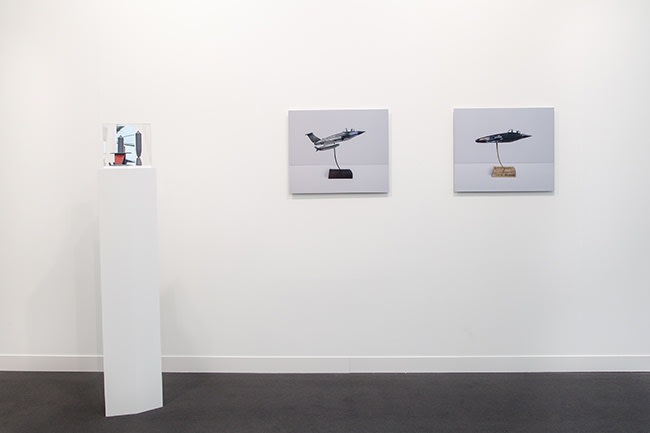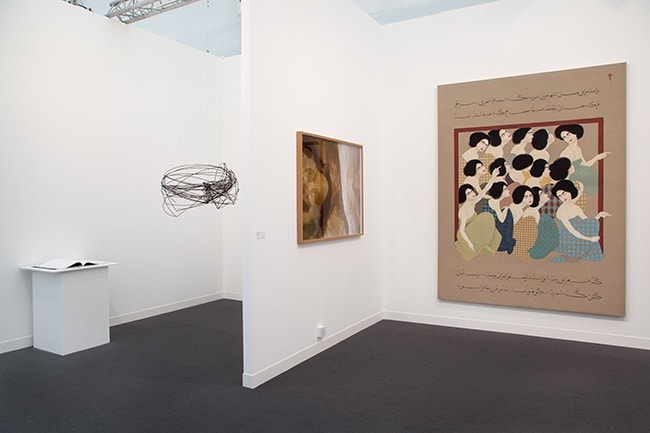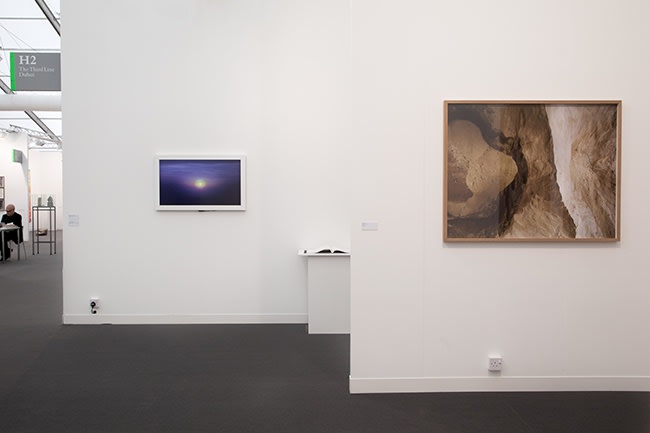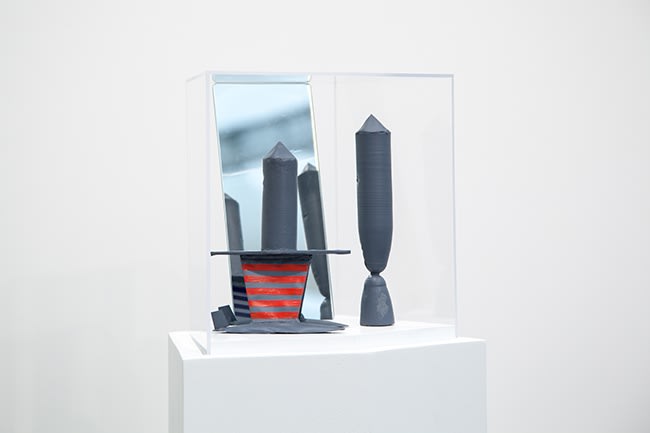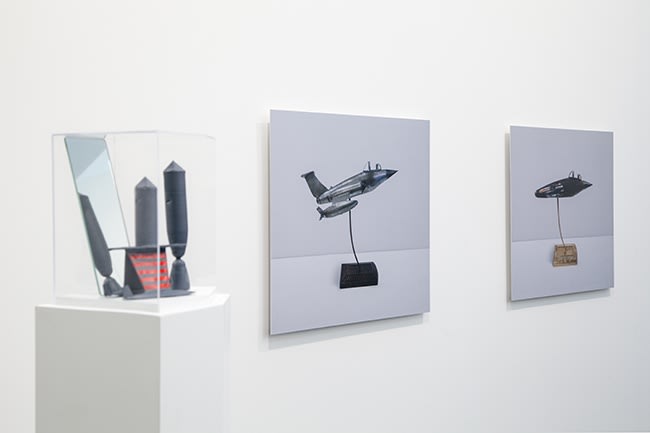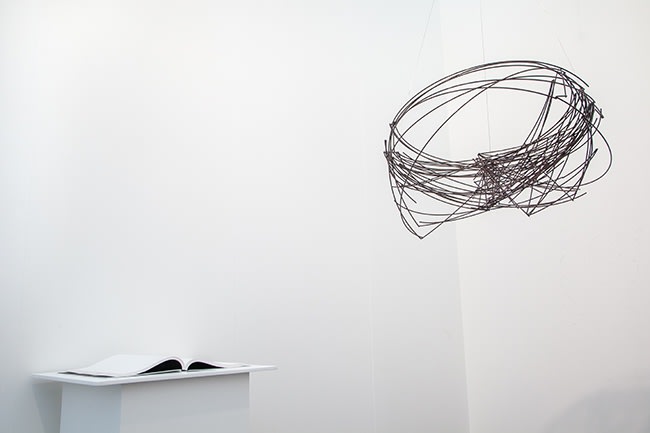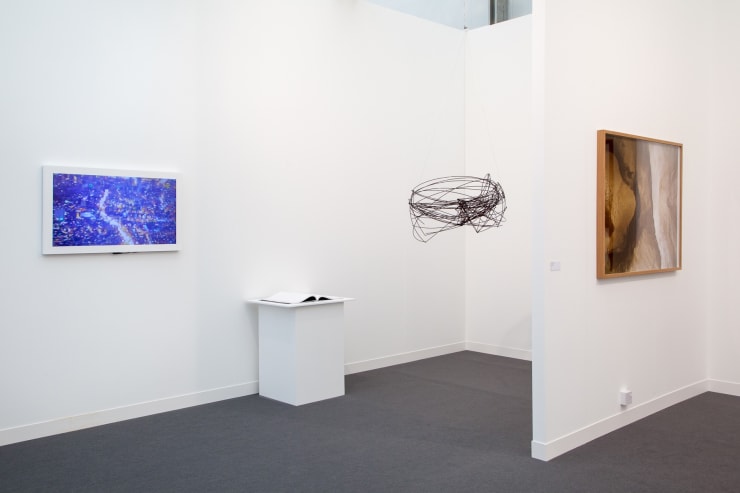The Third Line is participating in the 13th edition of Frieze London and is exhibiting works by Babak Golkar, Hayv Kahraman, Joana Hadjithomas & Khalil Joreige and Zineb Sedira. The selection of the works is based on the theme of geo-political networking, mapping and historiography. Over the years, Babak, Hayv, Joana & Khalil and Zineb have all developed bodies of work that reflect their social conditions – as immigrants, travellers, participants – within the diverse frameworks that support their professional, personal, social and political identities.
Originally part of Joana and Khalil’s project, I must first apologise… – which first exhibited at Villa Arson in 2014, and is currently exhibiting at HOME – the sculptural installation Geometry of Space (2014) observes the attempts of scammers to make their scams convincing and believable to the victims. Using information and facts from recent political, economic, religious, environmental, and financial events, they choose various countries to locate their story, usually in destinations where corruption seems plausible for them. This imagined mapping of corruption is shown through a series of sculptures and drawings that seek to track the circulation, and geographic itineraries of emails. The locations and countries that appear in a selection of over two hundred emails per year were used to identify these itineraries, whose coordinates (latitude and longitude) coincide with different events around the world. They are materialized with steel bands that give shape to a globe and physical reality to the virtual network as well as to the chronicle of events tabulated over a year of scams. The sculptural work will be accompanied by the artist’s video work I stared at beauty so much: Waiting for the barbarians (2013). Inspired by the Alexandrian poet Cavafy’s seminal work, a series of shifting panoramic images depict the rapid transformation and disintegration of Beirut, framed by the timeless words about a city anticipating its own ruin.
Zineb's photographs and video works use the intimate perspective of her own experience to investigate more universal ideas of mobility, memory and transmission, as well as explore issues concerning the environment. Sugar Craters (2013) is from a relatively new body of work, which traces the movement of sugar, starting its journey from locations across the world, and ending in the Port of Marseille, to form the sugar silos of St. Louis Sucre. These are documented by the artist as symbolic commentary on human mobility, presenting concepts of legacy and its transmission, and mankind’s impact on his environs.
Backyard Wars (2014), an assemblage piece from Babak’s The Return Project, is a decorative, outdoors metal model airplane taken apart and then reconstructed, considerably altering the appearance, which is burnt at one end and embellished at the bottom in gold paint. “The end result was akin to an iconic trophy that reads as a loose analogy into the West’s ‘questionable’ foreign and economic policy in the developing world. This idea was further expressed within A Monument to the Cold War, a sculpture created using the left over parts from the original model airplane that echoes both earlier and current histories. This work bears an uncanny liking to another botched up trophy, an apt ‘prize’ awarded to the egos of the world’s superpowers as they compete for the role of headline sponsor for global capitalism.” (Sara Raza, Babak Golkar: Experiments With Discontinuity, 2014).
New works by Hayv, including Curfew, are part of the series How Iraqi Are You? They are inspired by the Maqamat Al-Hariri, which are 12th century illuminated manuscripts that depicted daily life in Baghdad. The manuscripts allow her to explore her experiences as an Iraqi immigrant and to reevaluate her current position in relation to her cultural heritage. Each painting is a vignette of her life formed from memories of her childhood in Iraq and her family's flight to Sweden during the First Gulf War. The texts in the works are personal memories from growing up in Baghdad as well as tongue twisters, aphorisms, typical Iraqi words and stories of existing as a refugee in Sweden, all in which the concept of dividing the text in color – black to narrate the story and red as commentary – is directly derived from the Maqamat. They become a recording of her disassociation with her culture and perhaps a yearning to reconnect with it. The process of writing the text in the works became somewhat performative and very much part of the work itself since she was actively relearning how to write her language as well as read and speak her mother tongue.
BOOK SIGNING
The Rumors of the World: Rethinking Trust in the Age of the Internet
Wednesday, Oct 14, 2015 | 3 PM | The Third Line booth H2
Joana Hadjithomas & Khalil Joreige will be doing a book signing of The Rumors of the World: Rethinking Trust in the Age of the Internet, a new publication on their work which has been published to accompany the opening of I must first apologise…, their first solo exhibition in UK at HOME Manchester. Edited by Omar Kholief, Published by Sternberg Press, Co-published with Villa Arson, Nice; HOME, Manchester; and MIT List Visual Arts Center, Cambridge, MA.
The artists will be present at the booth to talk about the project and sign copies of the publication.

